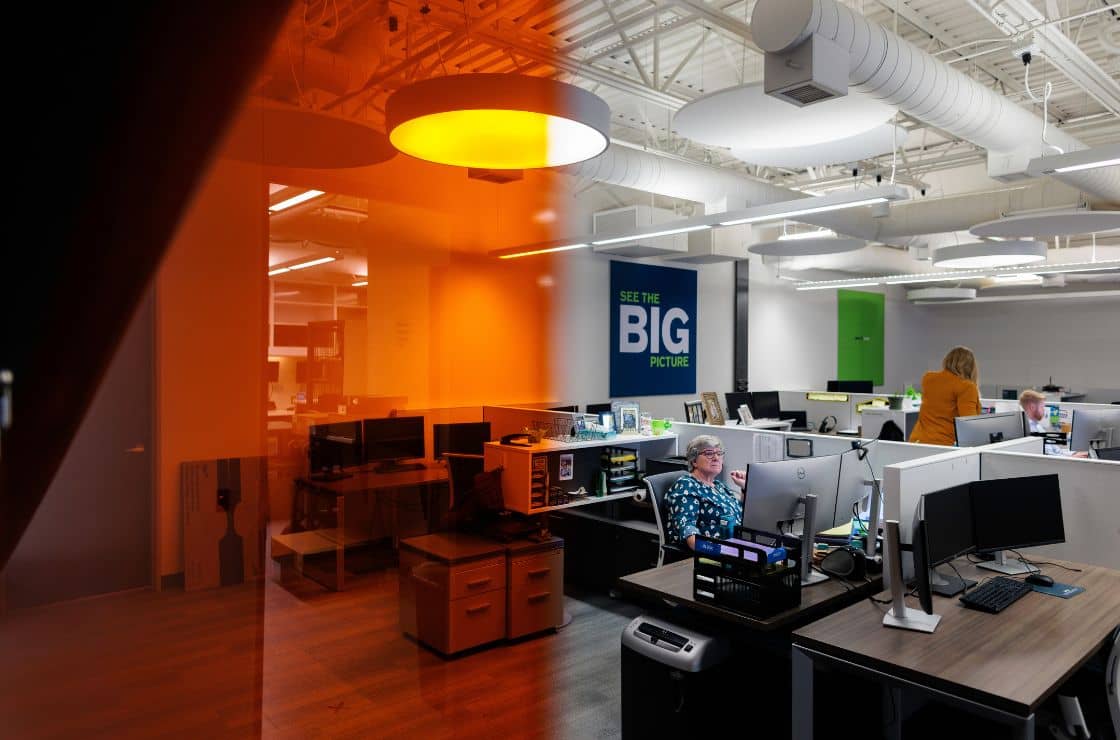Avoid the Profitability Leak + Software Solutions Your Business Needs

We’ve all felt the pain of software outages, which can virtually paralyze a business. Imagine people sitting around, waiting for someone to “fix” the issue so they can go back to work. Management and IT jumps into action, doing whatever it takes to bring the system back online.
However, this same sense of urgency does not happen with the day-to-day inefficiencies of antiquated legacy software. In the end, this issue could have a greater impact on your bottom line.
For example, every spreadsheet that is used to “merge” data between systems or redundant data entry creates a chance for errors. These errors can result in lost revenue, inefficiency, or incomplete data that impact management decisions. With that being said, how do you know when it’s time to consider making changes to your processes and systems?
Common Signs That Your Software Systems Need Improvement
Identifying the signs that your current systems are candidates for improvement is one of the first steps.
- Staff are inputting the same data in several systems
- Data entry is not consistent
- Key reports need to be manually manipulated
- Critical systems and processes are not well documented and maintained
- Management does not have key data to make informed decisions
- Critical systems developed in-house are built with antiquated technology, such as Microsoft Access or Silverlight
- Competitors are easily outpacing your present technology capabilities
Quantify the Impact of the Problems and Make a Change
Software systems are an asset to the business, which means they require maintenance, support, and sometimes replacements. Just like any other asset, you need to determine if there will be a return on investment if you change. Making a change is costly and painful, so you need to make sure it’s worth it.
The following are areas to consider in determining the cost and return of making a change.
- Can you generate new revenue or capture more existing revenue?
- Can you reduce overhead or limit dependency on key employees by automating processes?
- Can you create a competitive advantage?
- Will better and timely data allow you to manage the business smarter?
Create a Clear Business Objective
Once you’ve quantified the impact that the new software or a change will make, identity the business objective for the project. Examples of outcome-driven objectives:
- Create confidence we are billing our clients for all services provided
- Collect information from our clients faster to increase efficiency
- Automate work order processing to limit manual entries and errors
- Replace our legacy system to limit the risk of lost data
Outlining clear objectives will help keep your team focused on the results. This is critical to the success of any project.
Identify your options
Once you have set your objectives, you need to determine your options. In most cases, you will have multiple options, including:
- Maintaining status quo
- Implementing off-the-shelf solutions
- Customizing platforms such as Microsoft Dynamics, Microsoft PowerAps, or SalesForce
- Integrating systems or databases
- Building a custom software solution
Most small businesses do not have a full-time CTO to help them determine the best option. For those who may need assistance navigating their way through the options, it is best to hire a professional. For instance, Lutz Tech. We work hard to guide our clients through the digital transformation process with ease.
No matter how major or minor your software issues may be, we have experts that are willing and able to assist you. Helping clients on each phase of the journey through strategy, implementation, and support, Lutz Tech will make sure the process is efficient from beginning to end. Learn more today!

- Strategic, Individualization, Futuristic, Ideation, Arranger
Ryan Wade
Ryan Wade, Tech Director, began his career in 1996. With a well-rounded background spanning finance, marketing, and technology, he brings a strategic mindset and a deep understanding of how to align modern solutions with real business needs. His experience across industries allows him to connect the dots and deliver practical, value-driven outcomes for clients.
Bringing a unique blend of technology expertise and business experience, Ryan works alongside clients and internal teams to identify and implement solutions that streamline operations and support long-term growth. His responsibilities include guiding software selection, modernizing outdated systems, implementing automation, and enhancing reporting capabilities.
At Lutz, Ryan leads the ongoing development and support of ThreadWorks, the firm’s secure, centralized document management platform that streamlines document exchange and improves the overall client experience. He also serves on the firm’s Tax and Audit Policy Committees, contributing to innovation efforts that improve service delivery across divisions. His ability to think strategically and bring structure to evolving initiatives continues to drive progress across the firm.
Ryan lives in Omaha, NE, with his wife, Tiffany, and children, Ethan and Veronica. Outside the office, you can find him playing guitar, golfing, working out, and being a loyal Jaysker.
Recent News & Insights
Finding a Lifelong Career
CMS Announces New Method II Billing Edits for Critical Access Hospitals
The Dollar and International Diversification + 4.30.25
Lutz Announces Ryan Cook as New Managing Shareholder



.jpg?width=300&height=175&name=Mega%20Menu%20Image%20(1).jpg)
%20(1).jpg?width=300&height=175&name=Mega%20Menu%20Image%20(2)%20(1).jpg)
%20(1)-Mar-08-2024-09-27-14-7268-PM.jpg?width=300&height=175&name=Untitled%20design%20(6)%20(1)-Mar-08-2024-09-27-14-7268-PM.jpg)

%20(1)-Mar-08-2024-09-11-30-0067-PM.jpg?width=300&height=175&name=Untitled%20design%20(3)%20(1)-Mar-08-2024-09-11-30-0067-PM.jpg)
%20(1).jpg?width=300&height=175&name=Mega%20Menu%20Image%20(3)%20(1).jpg)
%20(1).jpg?width=300&height=175&name=Mega%20Menu%20Image%20(4)%20(1).jpg)
%20(1).jpg?width=300&height=175&name=Mega%20Menu%20Image%20(5)%20(1).jpg)
-Mar-08-2024-08-50-35-9527-PM.png?width=300&height=175&name=Untitled%20design%20(1)-Mar-08-2024-08-50-35-9527-PM.png)


.jpg)




